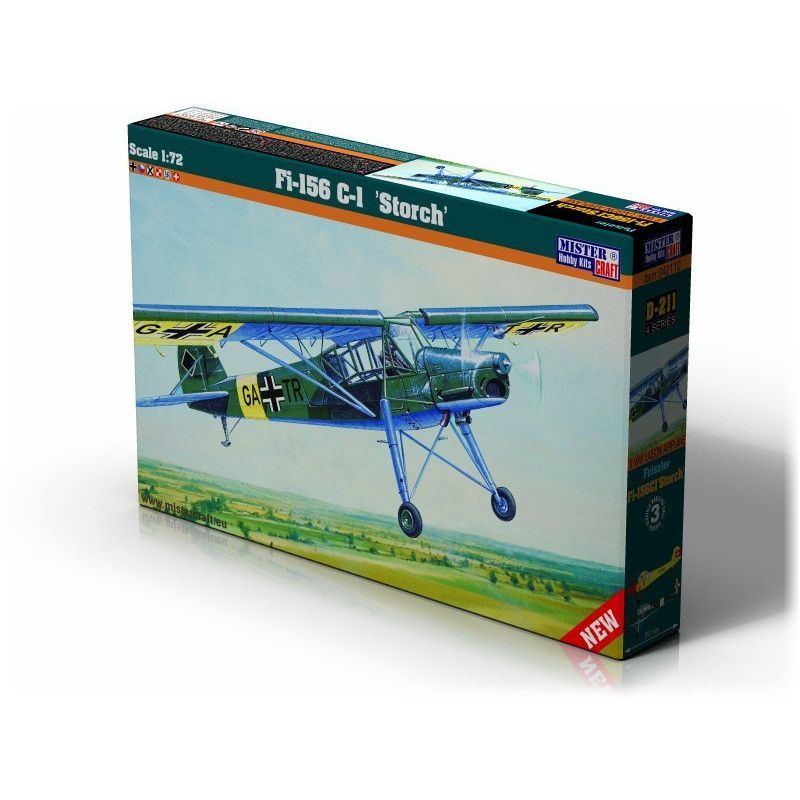Fieseler Fi-156 C-1 Storch in 1:72 / D-211
Fieseler Fi-156 C-1 von Mistercraft Maßstab 1:72 Nr. D-211
The Fieseler Fi 156 Storch(English: Stork) was a small German liaison aircraft built by Fieseler before and during World War II. Production continued in other countries into the 1950s for the private market. It remains famous for its excellent STOL performance and low stall speed of 31 mph (50 km/h); French-built later variants often appear at air shows.In 1935, the RLM (Reichsluftfahrtministerium, Reich Aviation Ministry) invited several aviation companies to submit design proposals that would compete for the production contract for a new Luftwaffe aircraft design suitable for liaison, army co-operation (today called forward air control), and medical evacuation. This resulted in the Messerschmitt Bf 163 and Siebel Si 201 competing against the Fieseler firm's entry. Conceived by chief designer Reinhold Mewes and technical director Erich Bachem, Fieseler's design had a far better short take off and landing ("STOL") performance. A fixed slat ran along the entire length of the leading edge of the long wings, while a hinged and slotted set of control surfaces ran along the entire length of trailing edge. This was inspired by earlier 1930s Junkers Doppelflügel, "double-wing" aircraft wing control surface design concepts. For the Fi 156, this setup along each wing panel's trailing edge was split nearly 50/50 between the inboard-located flaps and outboard-located ailerons, which, in turn, included trim tab devices over half of each aileron's trailing edge length.
